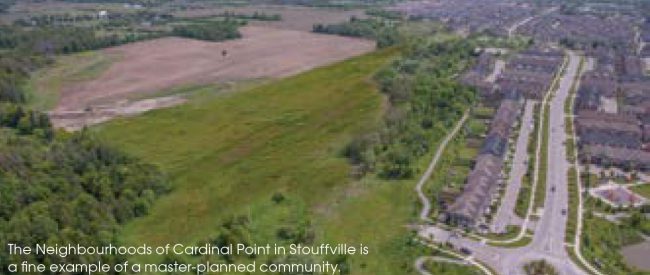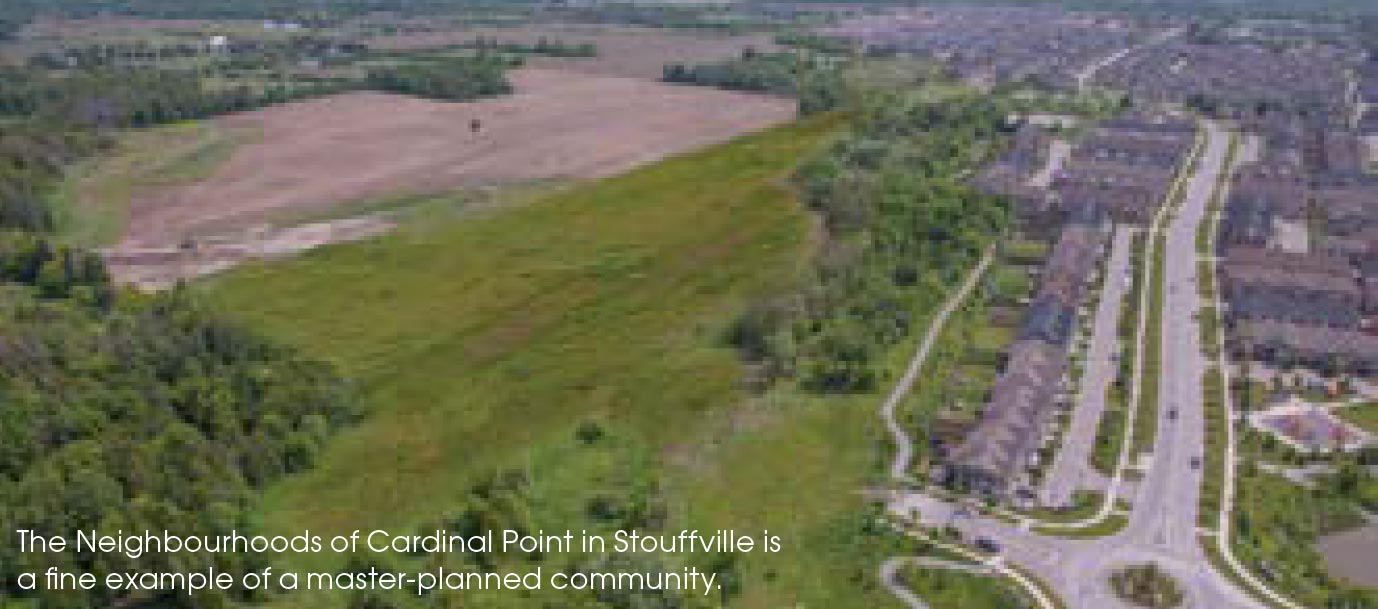the view from inside
LAND ACQUISITION
FOR RESIDENTIAL DEVELOPMENT
A complex and fascinating part of the plan

Master-planned communities are designed on a vision for an entire, and often large, undeveloped land area. Master plans are the blueprint for how the neighbourhoods will look and feel to future residents. Those who buy a home in this type of community know how their surroundings will evolve over time, with schools, parks, transit routes and additional development carefully laid out. Developers generally plan to include a range of housing styles in order to meet the needs of households throughout their changing life stages.
All of this can happen only after a developer acquires a piece of land, which can take up to a decade or more. Land development companies have to be forward thinking and proactive as the planning approvals process is highly regulated by all levels of government through many different departments and may also include area conservation authorities.
Land developers consider many factors to determine the timeframe before a development
can begin, such as zoning and existing and/or needed infrastructure. A shorter timeline occurs when lands are already designated by the municipality’s official plan for residential/urban uses. Public transit nearby can mitigate the need for parking and the need to expand road capacity to support the development, again contributing to a reduced timeline.
If connections for water, sanitary services, etc. are not readily available, the developer must determine whether there is capacity to install what is needed.
For residential development, municipalities must follow the process set out in the Planning Act as it relates to public input and transparency. Development proposals are also subject to review by technical experts and agencies, whose input is considered by council before rendering approval. If an application is appealed to the Ontario Municipal Board, the process can take much longer.
Infill and brownfield sites are more complex. Infill developments in mature areas with

smaller lot sizes may require land assembly, possible only where existing owners are willing to sell. Infill sites often have more neighbours who are potentially affected by the proposed plan, so public consultation can take more time.
An example of a successful master-planned community that resulted in years of preparation is Geranium’s The Neighbourhoods of Cardinal Point in Stouffville, which began with a vision that is nearing completion today. The development process commenced in 2005, Phase 1 went on sale in 2007, and construction began in 2008. The community features features over 800 homes consisting of two- and three-storey townhomes, bungalows and bungalows-with-lofts, family-sized detached homes and innovative stacked and back-to-back three-level towns.
There are parks and 30 kilometres of trails within a natural ravine. Public transit buses service the community via a main through street, and roundabouts calm traffic. Stone entry gates and wide sidewalks with attractive street lighting add appeal. All of these elements were considered during the master planning of this community, with input from community stakeholders and municipal government departments to ensure the best outcome for the Town and its residents.
Shakespeare wrote, “The play’s the thing.” For land owners/developers, the plan’s the thing – and the earlier the planning starts, the better the community for the homeowner.
Cheryl Shindruk is executive vice president, land development for Geranium Corporation. Since 1977, Geranium has built more than 8,000 homes in fine neighbourhoods and communities throughout Ontario. Geranium.com



